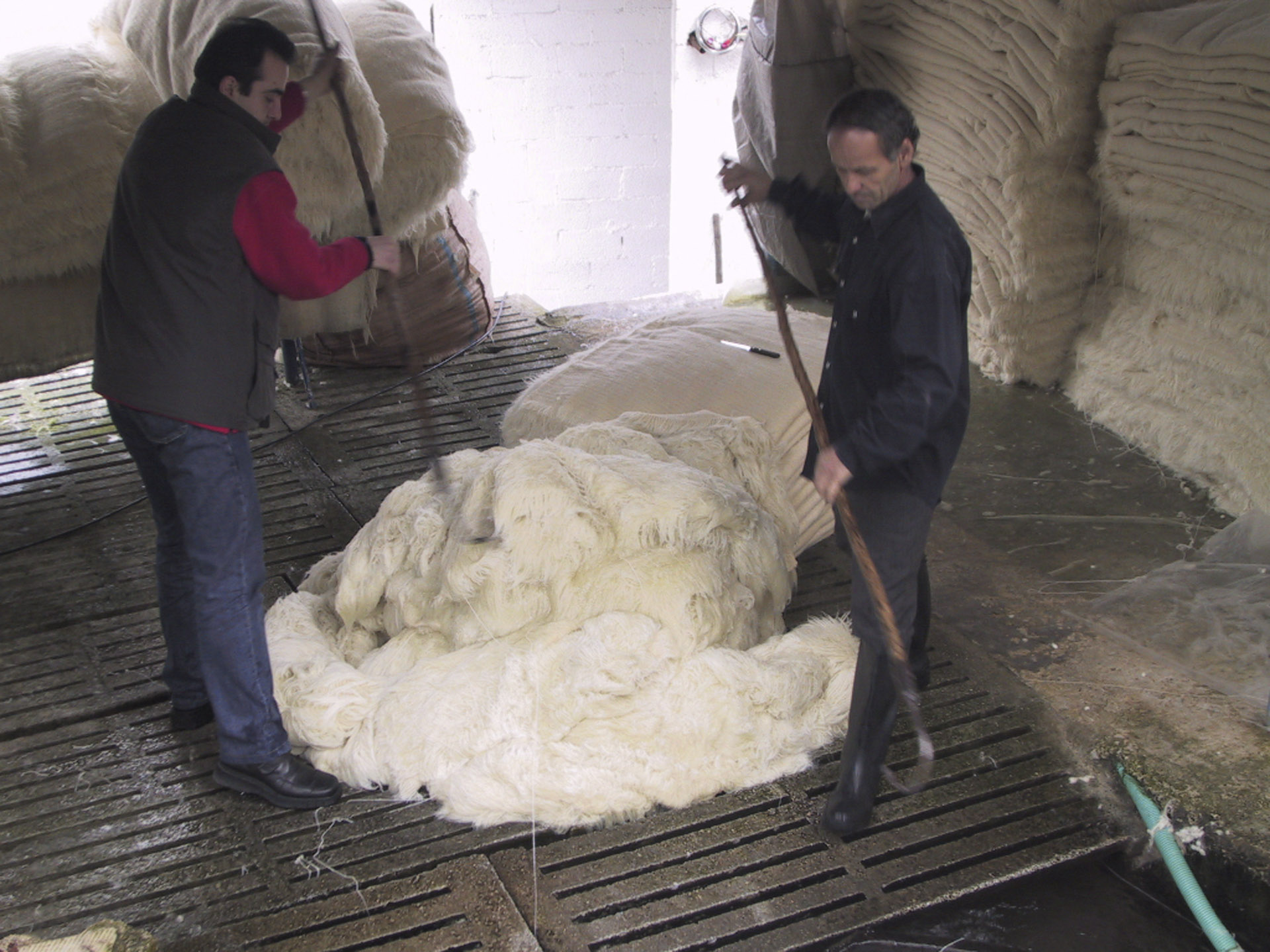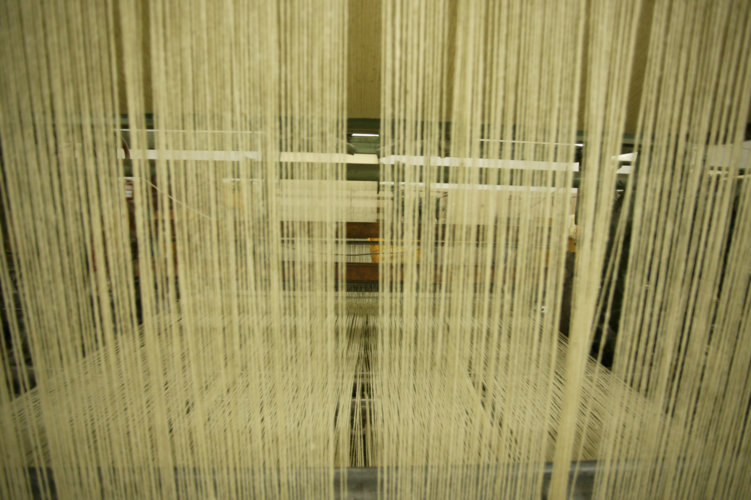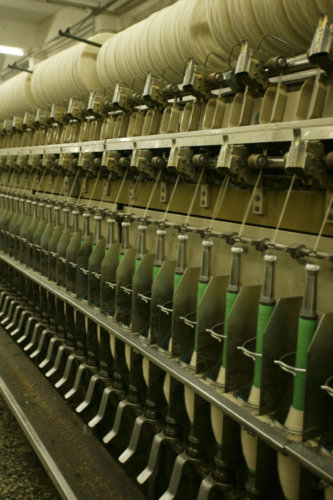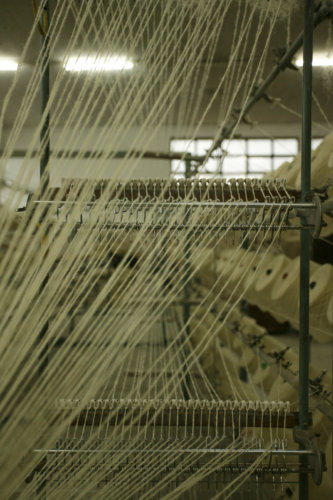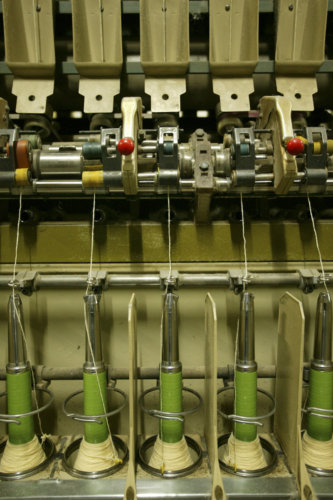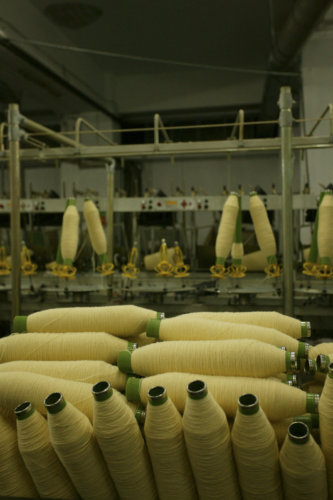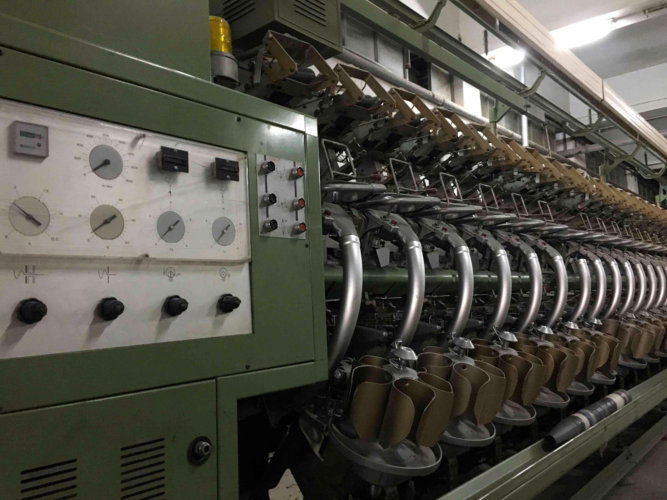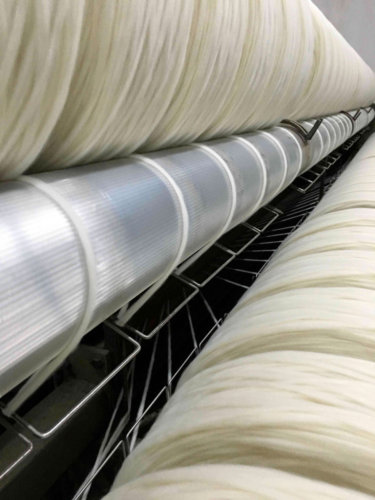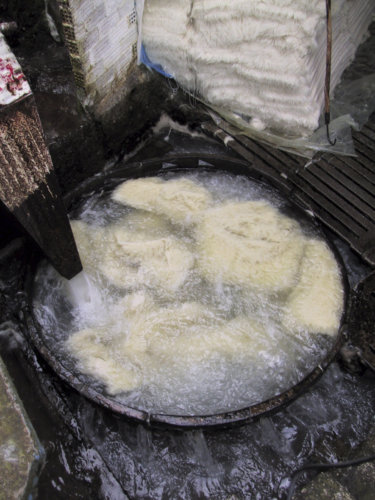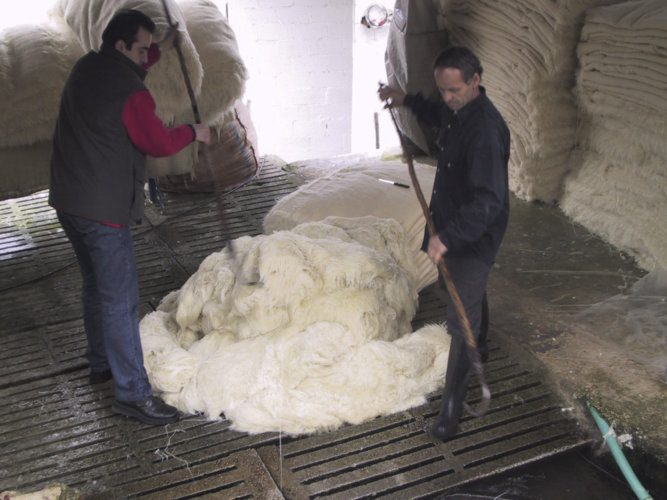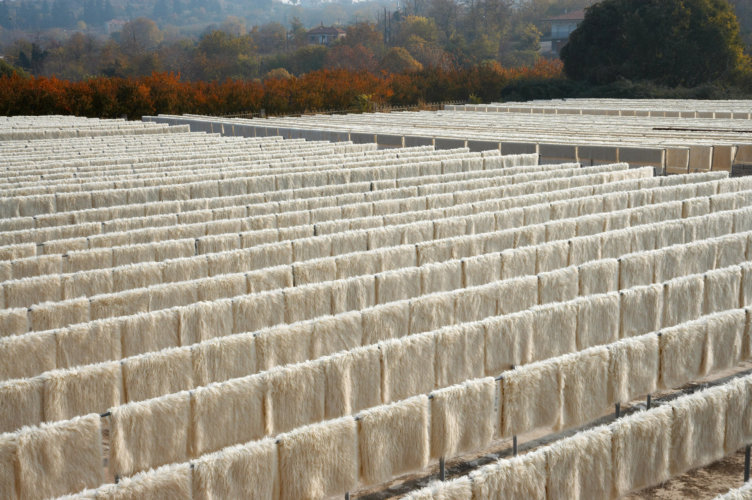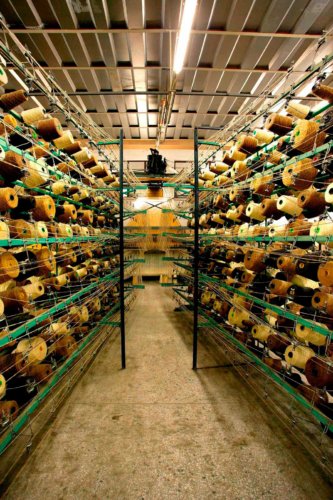A glimpse inside
the flokati’s production process
lthough hundreds of years have passed since the first Flokatis were ever produced, we are very proud to say that we are still using the same traditional way of making hand-woven Flokati rugs.
Characteristically, on our hand-woven Flokati rugs, the yarns of the pile are interwoven with those of the backing, so that they become one, creating a highly durable and desirable result. In addition, as in the traditional way of production, each of our rugs has its own hand woven selvedge and fringes.
Moreover, all our Flokatis have 100% Pure New Wool Pile. The wool we use for them is always pure and new and of the highest possible quality. Apart from the physical warmth and gentle feeling of the wool, it also has excellent absorbency, high moisture regain, excellent elasticity and resiliency. It also reduces staining because spills don’t soak in easily and it moreover has fire proof properties and is recyclable.
In order to produce our rugs using the traditional way, meticulous hand labor is required. In the first production stages, the wool passes through the “fearnough wiley”, a type of a card that has thousands of wire teeth in order to open up the pressurized in bales wool.
In the case of the Colored carpets the wool is first dyed before passing through the fearnough wiley. We always dye the raw material (wool) and not the final product (carpet), although this is much more costly. The reason is that this way we achieve an excellent color uniformity throughout the surface of the carpet and the pile becomes much more fluffy, good looking and live compared to the pile of a Flokati dyed as a finished product after it has been already woven!
The fluffy fibrous material that comes out of the fearnough wiley is put through carding machines that align its fibers and distribute them evenly, creating the “lap”, a thin veil of wool. The “lap” is separated into narrow strips at the “condenser”, transforming the fibrous material into pre-yarn form called “sliver”. The sliver that is wrapped around rotating cylinders is then moved to the spinning frames that twist the yarn until it reaches the desirable strength. The produced yarn is wound onto bobbins at the winding machines and placed into a “conditioner” that steams it in order to prevent it from untwisting.
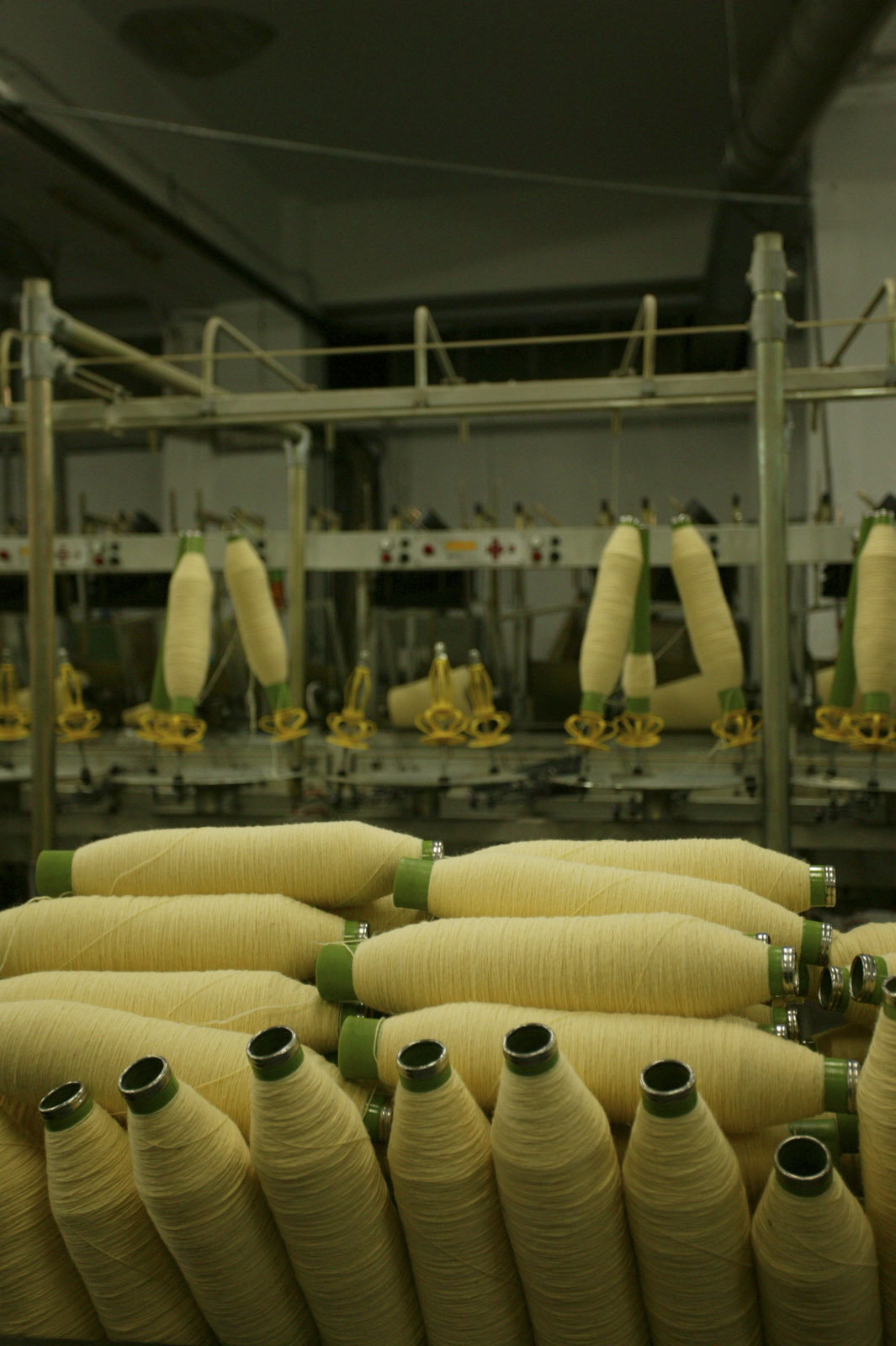

In the warping process that follows, the yarns are sectioned on the main drum of the warping machine and unwound onto rolls called “beams”. They are then loaded on the looms for the weaving of the rugs. In parallel, the spooling machines are producing the weft and selvedge spools to be inserted in the shuttles of the loom. In order to operate a loom for the production of our hand woven Flokati, Checkers & Stripes rugs an experienced weaver is required on each one of them.
It is the most important part of the production process because the skill and experience of the weaver, will mainly determine the outcome. Our weavers are highly skilled with long experience in Flokati production, a fact that is evident in the detail and quality of all our rugs.
Once the rugs are produced, they are ready for the final process unique to Flokati called “water milling”. This process is a totally natural one, which is done outdoors in natural streams located in the highland villages of the Pindos mountain chain.
The streams’ cold water that runs down the mountains is deviated using small dams and channeled into chutes. The water then pours with great pressure into “vats” which contain the rugs, causing them to turn creating swirling whirlpools. The rugs twist and turn for many hours. The effect that the milling process has on the rugs is twofold. It shrinks the back side of the rug, creating a more solid foundation for it, while it opens up the yarns giving its characteristic shaggy appearance and fluffy feeling.
Once the milling process is over, the rugs return to our premises were they are hang out to dry in the sun before they pass our strict final quality control and packaging.
